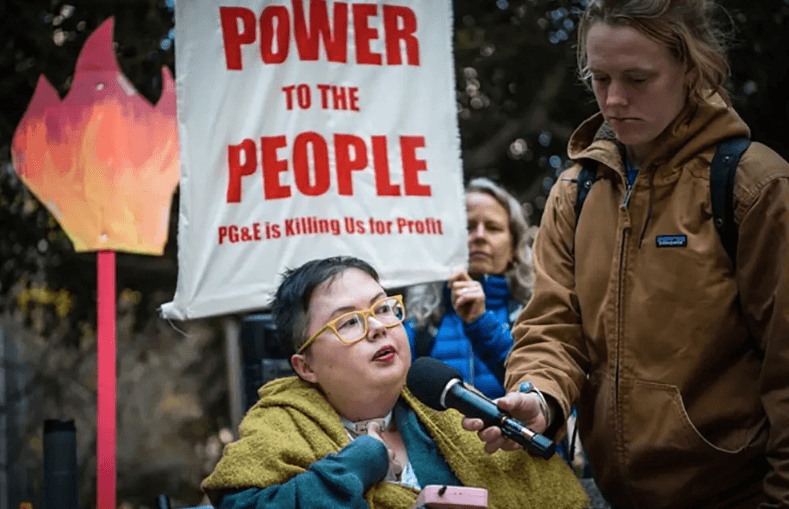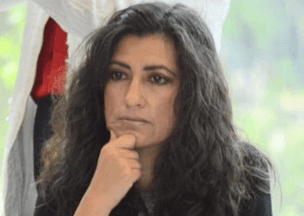Stacey Park Milbern was a warrior, an advocate, and a champion for those who were often forgotten or left behind by society. Her life may have been brief, but her impact on the world of intersectional activism and disability justice will be felt for generations to come. From her roots in the South to her unwavering commitment to liberation for all disabled people, Stacey’s legacy is one of radical love and care. In this blog post, we’ll explore the incredible life and dreams of Stacey Park Milbern and honor her memory as a crip ancestor whose resilience continues to inspire us all.
Read also The Inspiring Rise of Forrest Kolb’s Net Worth
Early life and Southern roots
Stacey Park Milbern was born and raised in the South, in a small town called Athens, Georgia. Despite her physical disability, Stacey was always determined to live life on her own terms. She attended the University of California, Berkeley where she majored in Political Science.
Growing up with a physical disability meant that Stacey had to navigate a world that wasn’t built for people like her. But instead of letting that hold her back, she used it as fuel to fight for change and create a more accessible world for all disabled people.
Stacey’s experiences growing up in the South also shaped her worldview and advocacy work. She understood firsthand how systems of oppression intersected and impacted marginalized communities differently. This understanding fueled her commitment to intersectional activism – fighting not just for one cause but recognizing how different forms of oppression were interconnected.
Throughout her life, Stacey never forgot where she came from or the struggles faced by those who shared similar backgrounds. Her Southern roots may have been miles away from California but they remained an integral part of who she was and what drove her work towards justice for all disenfranchised individuals.
Disability Justice: Stacey’s Dream and Revolution
Stacey Park Milbern’s vision of Disability Justice is a radical and transformative concept that has redefined the disability rights movement. For Stacey, disability was not just an individual or medical issue but it was also embedded in social, political and economic structures. She believed in creating spaces where disabled people could thrive rather than just survive.
Stacey’s dream was to create a world where everyone had equal access to opportunities regardless of their abilities. Her revolution centered around intersectionality – recognizing how different forms of oppression intersected with disability. She advocated for the inclusion of marginalized voices such as queer, trans and BIPOC disabled people who are often left out of conversations about disability justice.
For Stacey, Disability Justice meant challenging ableism at its core by building communities based on mutual aid and care instead of charity or pity. It involved dismantling oppressive systems that harmed both disabled people and nondisabled people alike.
Stacey’s legacy lives on through her activism which reminds us to center our work on those who are often forgotten or excluded from mainstream society. Her vision inspires us to keep pushing for change until we achieve true equality for all disabled individuals.
Intersectional Activism: Stacey’s Legacy and Call to Action
Stacey Park Milbern was a fierce advocate for intersectional activism. She believed in the power of bringing diverse communities together to fight against oppression and systemic inequalities. For Stacey, disability justice was not an isolated issue, but instead intersected with race, gender identity, sexual orientation and other social identities.
Through her work as a community organizer and activist, Stacey fought tirelessly for the rights of disabled people from marginalized backgrounds. She recognized that many disabled individuals face discrimination not only because of their disabilities but also due to their socioeconomic status or ethnicity.
Stacey’s legacy inspires us today to continue fighting for social justice through intersectional activism. We can honor her memory by advocating for policies that uplift voices from historically underrepresented groups and hold those in power accountable for implementing change.
As we reflect on Stacey’s life and advocacy work let us remember the importance of centering marginalized voices within our own movements. Intersectionality means recognizing how different forms of oppression intersect with each other to create unique experiences that may be invisible without acknowledging these intersections.
Let us follow in Stacy’s footsteps by amplifying marginalized voices while pushing towards collective liberation through intersectional activism.
Read also Cody James Reedy: An In-Depth Look
Stacey’s unwavering commitment to the liberation of queer, trans, and BIPOC disabled people
Stacey Park Milbern was a fierce advocate for the liberation of queer, trans, and BIPOC disabled people. Her commitment to intersectional activism meant recognizing that disability is not just an individual experience but also shaped by systemic oppression and discrimination.
Stacey’s dedication to this cause was evident in every aspect of her life. She co-founded the Disability Justice Culture Club (DJCC), which aimed to create space for disabled people from marginalized communities. Through DJCC, she organized events that centered on community building and education around disability justice issues.
In addition, Stacey worked with various organizations such as Sins Invalid and the National Council on Independent Living to amplify the voices of those most affected by ableism, racism, homophobia/transphobia, sexism, and other oppressive systems.
She believed in creating a world where all disabled people could live their lives freely without fear or barriers. As a queer Asian-American woman with disabilities herself, Stacey knew firsthand how these intersecting identities complicate access to resources and opportunities.
Despite facing challenges like healthcare inequalities due to her insurance company denying coverage for necessary medical equipment or treatments; she continued fighting until her last days.
Throughout her life’s work as an activist for social change at large intersections – including race/ethnicity/class/gender/sexuality/disability status – she has become a role model who inspired many others along with leaving behind powerful legacies that will continue empowering future generations.
Honoring Stacey Park Milbern’s Life and Dreams
Stacey Park Milbern was a fierce disability rights activist and intersectional warrior who dedicated her life to fighting for the liberation of marginalized communities. She passed away in May 2020, leaving behind an incredible legacy that continues to inspire people all over the world.
To honor Stacey’s life and dreams, it is important to recognize her unwavering commitment to creating a more just and equitable world. Stacey believed that true liberation could only be achieved through collective action and solidarity across different communities.
Her work centered on advocating for disability justice, which seeks to challenge ableism as well as other forms of oppression like racism, sexism, homophobia, transphobia, and classism. This intersectional approach was at the heart of what made Stacey such an effective organizer and advocate.
One way we can honor Stacey’s legacy is by continuing to fight for social justice with radical love and care. We must also remember the importance of centering disabled voices in our movements for change.
As we reflect on Stacey’s powerful impact on the disability rights movement – including her role in organizing protests that led to passage of the Americans with Disabilities Act (ADA) – we should recommit ourselves to making sure every person has access not just legally but culturally too.
Stacey’s vision wasn’t limited by what society said she couldn’t do; instead she pushed boundaries until they broke down so everyone has equal opportunities regardless their backgrounds or abilities. By carrying forth this spirit into our own activism today will help ensure that her dreams become reality one day soon
Stacey’s Warrior Spirit: Speaking Truth to Power with Radical Love and Care
Stacey Park Milbern’s warrior spirit was undeniable. She spoke truth to power with radical love and care, never backing down from a challenge or shying away from difficult conversations. Stacey embodied the intersectional activism she fought for, always centering marginalized voices and uplifting those who were often silenced.
Through her advocacy work, Stacey showed that disability justice is not just about accessibility but also about dismantling ableism on all levels. She understood that true liberation could only come when we recognize and address the ways in which ableism intersects with other forms of oppression like racism, sexism, transphobia, homophobia, and classism.
Despite facing numerous challenges throughout her life due to her disability status and race/ethnicity identity as an Asian American woman, Stacey remained unapologetically herself. Her resilience served as an inspiration to so many within the disabled community and beyond.
Stacey believed in building bridges across communities through empathy and understanding. Through her tireless efforts as a speaker, writer, organizer – she worked hard towards creating safer spaces where people of all backgrounds can thrive together.
Read also Veibae’s Face Reveal
Stacey’s Impact on the Disability Rights Movement and the ADA
Stacey Park Milbern’s impact on the disability rights movement and the ADA cannot be overstated. As a fierce advocate for intersectional activism, Stacey recognized that disability justice was an essential component of any movement toward social justice. Her work centered around making sure that disabled people — particularly those from marginalized communities — were not left behind.
One of Stacey’s most significant contributions to the disability rights movement was her advocacy for access and inclusion in all areas of life. She understood that physical barriers were only part of what kept disabled people from full participation in society, and she fought tirelessly to ensure that policies like the ADA included measures to address systemic discrimination.
In addition to advocating for policy changes, Stacey also worked diligently to build community among disabled people. She believed strongly in the power of shared experiences and collective action, recognizing that change often came from grassroots efforts rather than top-down directives.
By speaking truth to power with radical love and care, Stacey made it clear that disabled voices must be heard in conversations about equity and justice. Her legacy continues today as activists continue her important work toward a more inclusive world where everyone can thrive regardless of ability or identity.
An Ongoing Commitment to Make the World More Accessible: Responsibility and Company Resources
Stacey Park Milbern’s legacy continues to inspire people from all walks of life to take action towards a more inclusive and accessible world. As we remember her life and contributions, we are reminded that accessibility is not just an individual responsibility but also a collective one.
Companies have a crucial role in making the world more accessible for disabled folks. It is their responsibility to ensure that their products, services, and workplaces meet the needs of people with disabilities. This means providing accommodations, creating accessible websites, hiring diverse employees with disabilities, and much more.
Fortunately, there are many resources available for companies to learn about disability inclusion and accessibility. From conferences to online courses and consulting services, businesses can tap into these resources to create welcoming environments for everyone.
But it’s not enough for companies to simply check off boxes or comply with regulations – they must go beyond that. They must listen to disabled individuals’ experiences and perspectives when designing policies or implementing changes.
Creating a truly accessible world requires ongoing commitment from both individuals and corporations alike. By working together towards this common goal inspired by Stacey Park Milbern’s legacy of intersectional activism – we can make significant progress towards a future where accessibility is not only possible but actively embraced as essential aspect of our society
Read also Why Odishadiscom is the Key to Reliable Electricity in Odisha
A Crip Ancestor and an Epitome of Interdependence: Stacey’s Powerful and Beautiful Resilience
Stacey Park Milbern’s legacy will live on as a beacon of hope and inspiration for intersectional activists everywhere. Her tireless work to advocate for the disabled community, particularly queer, trans, and BIPOC individuals, has paved the way for future generations to continue fighting for justice.
As we remember Stacey’s life and honor her dreams, let us also commit ourselves to carrying her torch forward. Let us embody the interdependence she championed in our own activism efforts. Let us speak truth to power with radical love and care just as she did.
Stacey was truly a crip ancestor – someone who fought tirelessly against ableism while embracing their disability identity. May we all learn from her example and continue building a world that is more accessible, inclusive, and equitable for all.





 Hiperblox.org: The Next Big Player in Decentralized Applications (DApps)
Hiperblox.org: The Next Big Player in Decentralized Applications (DApps)